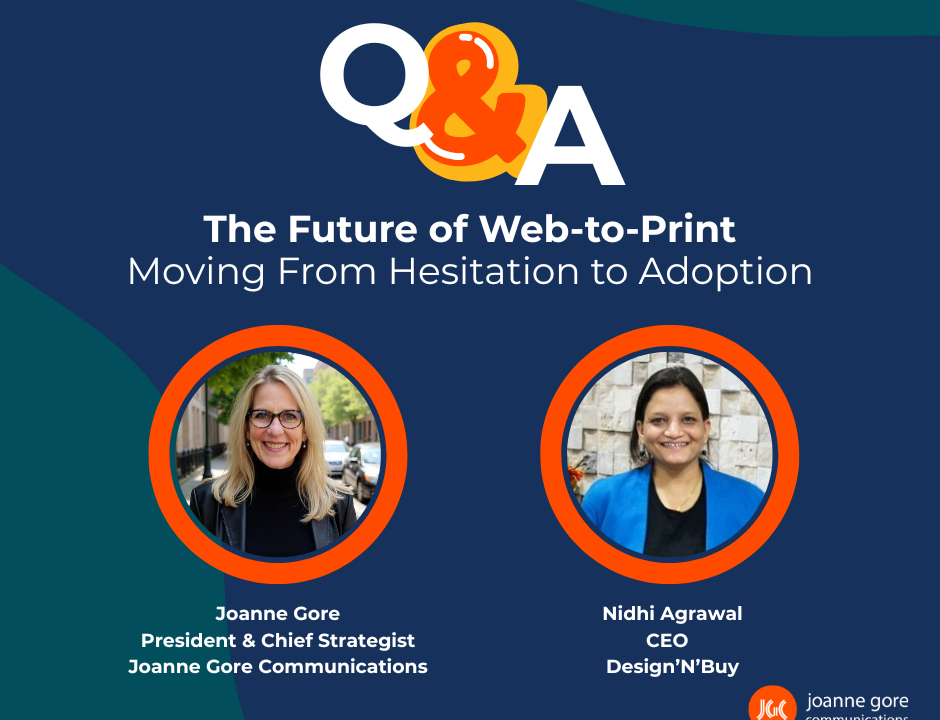Real Talk, Real Leadership: Why Mental Health Isn’t a Side Hustle
In the print and marketing world, we talk a lot about leadership: how to motivate teams, drive innovation, and hit targets. But one thing we don’t talk about enough? How much it takes out of you. Mentally. Emotionally. Physically. And what it looks like to lead from a place of authenticity.
Let’s face it: We’re human beings leading other human beings. We carry stress, pressure, personal baggage, and business goals…sometimes all before our second cup of coffee.
And yet, in a world of sales quotas and campaign deadlines, we’re still afraid to talk about the cost.
Dancing It Out, and Talking About It
A few months ago at Dscoop Long Beach, I found myself dancing my heart out at the closing party. Not because I was trying to blow off steam (although, yes, that too). But because, for me, dancing is therapy. It’s release. It’s a way to reset.
That night, I had the privilege of connecting with the She*t for Brains crew, Jessica DeCola, Jon Bailey, Christopher Minn, and David Rosendahl, who are pushing for real, raw conversations about mental health in our industry. Their mission is simple: break the stigma. And their impact? Immeasurable.
We need more of that. Especially in leadership.
Because the truth is, your mental health is your leadership strategy.
I’ve seen the good, the bad, and the downright toxic when it comes to management. I’ve worked for leaders who inspired me to grow and push boundaries, but I’ve also worked for the kind who’d announce, “I’m in the mood to fire someone today,” before vanishing into their office.
(Yes, that actually happened. Yes, I was one of the people they fired. And yes… good riddance.)
Leadership is not about control. It’s not about the corner office or your number of direct reports. It’s about vision, empathy, communication, and adaptability. It’s about recognizing when your team is burned out, when you are burned out, and choosing to do something about it.
Real Leaders Go First
During a recent webinar, David Rosendahl shared something that’s stayed with me. He was asked how comfortable he is talking about his own mental health on a scale from 1 to 5.
He said 5. “I’m at a point where I’m okay talking about it all.”
Then others chimed in with 2s, 0s, silence. Some were afraid they’d be judged. Others didn’t want to risk their jobs.
It hit me: if we want to lead with integrity, we have to go first.
That means showing up not just with answers, but with questions. Not just with strength, but with vulnerability. Not just with strategy, but with humanity.
Because when leaders speak openly about mental health, it gives others permission to do the same.
Mental Health Is a Business Metric
This is more than “feel good” content, it’s bottom-line business.
- Teams with engaged employees see 21% higher profitability
- Workers who exercise regularly are 33% less stressed and 22% more decisive
- Companies with effective leadership are 900% more likely to have engaged teams
What does that tell us?
That wellbeing isn’t a side hustle. It’s the engine behind innovation, resilience, and retention. When we take care of ourselves, we lead better. And when we lead better, our teams and businesses thrive.
So… What Does That Look Like?
Sometimes it means blocking off an hour for a walk instead of a meeting.
Sometimes it means turning down a speaking gig to attend your kid’s graduation — even if you’re supposed to be hosting a client event and delivering a keynote at the same time. (Yes, that happened. And no, I don’t regret it.)
Sometimes it means dancing like nobody’s watching, even when everyone is.
And sometimes, it just means saying: “I’m not okay right now.”
That’s not weakness. That’s leadership.
Let’s keep the conversation going.
What does your mental health look like at work?
What do you wish leaders talked about more?
What brings you peace?
Drop a comment. Share your story. Let’s make space for each other and for the kind of leadership our industry needs.




